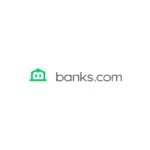Whether you currently have a checking account or if this will be your first rodeo, one thing’s for certain. Every bank, credit union or online bank you consider will likely offer at least one checking account, if not several. And online financial platforms have now entered the competition with more innovative checking account options.
So, how do you know how to block out all the noise to find the best fit for you? This guide will answer this question and explain everything you need to know about choosing a checking account to help you make an informed decision.
The Importance of Having a Checking Account
A checking account is an essential financial tool that can help you manage your money and simplify your financial life. When you open a checking account at a bank or credit union, you gain access to a wide range of services and benefits that can make it easier to track your spending, pay bills and save for your future.
One major advantage of having a checking account is the ability to write checks or use a debit card for everyday purchases. This can be a safer alternative to carrying cash, and it is an efficient way to pay bills or make transactions without the need for exact change. Furthermore, many banks and credit unions offer online banking services, allowing you to manage your account and make payments from the comfort of your home.
Beyond the convenience it offers, a checking account also provides you with a safe place to store your money. Most banks and credit unions are backed by the Federal Deposit Insurance Corporation (FDIC) or National Credit Union Administration (NCUA), respectively. These entities protect up to $250,000 of your deposits per account, per depositor, in the event of a bank failure.
Some checking accounts also come with additional perks such as interest earnings, cashback rewards or discounts on loans. These benefits can help you make the most of your money while also providing extra incentives to maintain a healthy account balance.
Types of Checking Accounts
There are four types of checking accounts to choose from – personal, business, joint and student checking accounts. Below is an overview of what to expect from each.
Personal Checking Accounts
A personal checking account is designed for everyday transactions. You can deposit and withdraw money, write checks, and use a debit card at the point of sale or online for purchases. These accounts usually come with a monthly maintenance fee that can often be waived if you meet certain requirements.
You may need to maintain a minimum balance or set up direct deposit to qualify for the fee waiver. Some personal checking accounts may also offer a nominal rate of return on your funds.
Business Checking Accounts
Specifically tailored for businesses, these accounts can help you effectively manage your company’s finances. They provide functionalities like writing checks, making deposits, and processing payroll that are essential to small businesses.
Business checking accounts differ from personal accounts as they often have higher transaction limits and fees. However, they may also provide additional services like merchant account integration and invoicing tools to help run your business smoothly.
Joint Checking Accounts
A joint checking account allows two or more individuals—typically spouses, partners or family members—to share a single account. Each person has equal access to the account, and all account holders can write checks, deposit funds, and withdraw money using a debit card.
Maintaining clear communication with your co-account holders is essential to avoid overdrafts and keep your finances organized.
Student Checking Accounts
Offered by many banks, this type of account caters to students by waiving certain fees and offering discounts on some services. They generally have no or low minimum balance requirements and may include features like mobile banking and online bill pay.
Be sure to check if the bank has an age limit or if the fee waivers have an expiration date. It’s also worth inquiring about products and services that may cater exclusively to student account holders.
Digital Checking Accounts
These accounts exist primarily through online and mobile platforms, offering similar services to traditional checking accounts but with a digital twist. Often provided by digital banks or fintech companies, they generally have lower fees and offer higher annual percentage yields (APYs) on your balance.
Digital checking accounts usually offer the convenience of 24/7 access, seamless money transfers and budgeting tools. And some have recently introduced credit-building resources to help you optimize your credit health.
How to Choose a Checking Account
Many checking accounts share the same feature, so it can be challenging to find the best fit. Here are some important considerations to help you make an informed decision:
- Assess your banking habits, financial goals and personal preferences. If you prefer in-person banking, an online checking account likely isn’t a good fit. But if you want to capitalize on a higher APY or other digital perks, an online checking account could be worthwhile.
- Research the reputation, accessibility and range of services of the financing institution offering the checking account you’re considering. Banks usually have more branches and ATMs nationwide, while credit unions often provide personalized customer service and lower fees. And online platforms make it easier to manage your money while on the go.
- Steer clear of fees. Look for an account with low or no monthly maintenance fees, as these can add up over time. Some banks offer free checking accounts, especially for students or seniors. You should also consider the availability of high-yield accounts if you want to earn interest on your balance.
- Evaluate the overdraft options. Some financial institutions offer overdraft protection, which links your checking account to a savings account or credit card. This can help you avoid hefty fees, but be mindful of any associated charges or interest rates.
- Look for added features that will make your banking experience more convenient. Consider the ease of online and mobile banking services. Look for features such as electronic bill pay, account alerts and mobile check deposit. If you frequently use ATMs, choose a bank or credit union with a large network or one that offers reimbursements for out-of-network ATM fees.
- Pay attention to the quality of customer service. Prompt and courteous assistance can be invaluable, especially when dealing with complex financial matters. Take the time to read reviews or ask for recommendations from friends and family.
Factors to Consider When Choosing a Checking Account
Below are some specific factors to evaluate before opening a new checking account:
Fees and Charges
When choosing a checking account, it’s essential to understand the various fees and charges associated with the account. You should review and compare fees such as monthly maintenance fees, overdraft fees, NSF fees and statement fees, just to name a few.
Monthly Maintenance Fees
Many banks charge a monthly maintenance fee for checking accounts, which can vary depending on the bank and account type. Carefully review your options and decide whether you’re willing to pay this fee or if you can find an account with no or lower monthly fees.
ATM Fees
Using ATMs can also come with fees, particularly if you make a withdrawal at one outside of your bank’s network. To save money, focus on finding a bank with a broad ATM network or one that reimburses ATM fees.
Accessibility and Convenience
The convenience of your banking experience is vital. Consider factors such as branches and ATM locations and the availability of online and mobile banking options that allow you to access your account at any time.
Interest Rates
Some checking accounts offer an APY (or interest) on your deposits, but the rates can vary. While interest is usually not the primary reason for choosing a checking account, it’s still a factor worth considering, especially if the account comes with competitive interest rates.
Minimum Balance Requirements
You could also be required to maintain a minimum balance to avoid fees or receive certain benefits. When choosing a checking account, selecting one with a minimum balance requirement that fits your budget and financial needs is important.
Mobile and Online Features
The best checking accounts will offer attractive mobile and online features, including bill payment, mobile deposits and account management. Make sure the account you choose has an easy-to-use mobile app and user-friendly online banking capabilities.
Other Perks and Rewards
Finally, consider any additional perks and rewards that may come with a checking account, such as cashback on purchases or discounts on services. While these extras may not be essential, they could provide added value and make your banking experience more enjoyable.
In-depth Analysis of Checking Account Features
How to Evaluate Account Fees
Look for an account with no monthly fee, as paying more doesn’t guarantee additional benefits. Also, take into account ATM fees, overdraft fees, and foreign transaction fees. Make sure to read the fine print and understand which fees apply to your account.
Assessing the Convenience of a Checking Account
Confirm the bank has enough branches and ATMs in your area for easy access to your money. If you prefer using an online bank, ensure that they offer a user-friendly website and mobile app for easy account management. It’s equally important to confirm that the bank provides other services you might need, like direct deposit or wire transfers.
Understanding Interest Rates and Their Impact on Your Balance
Although checking accounts are typically used for day-to-day transactions, some banks offer interest-bearing checking accounts. Higher interest rates can lead to more significant returns over time, but they might come with additional requirements or fees. Weigh the potential earnings against the possible costs to determine if an interest-bearing account is right for you.
The Presence of Mobile and Online Banking Options
As mentioned above, most banks offer online and mobile banking options, allowing you to monitor your account, transfer funds, deposit checks, and more from the comfort of your home or on the go. The financial institution or platform you choose should offer a user-friendly and secure platform that fits your needs and preferences.
The Importance of Other Features and Benefits Like Credit Building
Many online banks are starting to provide perks such as credit-building services, cashback or rewards programs or free identity theft protection. While these features might not be your primary focus when selecting a checking account, they can provide added value for your finances in the long run.
How to Make the Most Out of Your Checking Account
When you’re ready to move forward, here are a few tips to help you make the most of your new account:
- Compare different accounts. Start by researching various banks and their offerings. Some accounts may have low or no fees, higher APYs or unique features to help you save and manage your money better.
- Make use of online banking. Almost all banks now offer online banking. This feature makes it easy for you to access your account, make transactions, and keep track of your spending conveniently 24/7.
- Link accounts with your savings. To maximize interest earnings, consider linking your checking account to a high-yield savings account. Doing so allows you to transfer funds easily between accounts and ensure you’re not missing out on potential interest gains.
- Leverage budgeting tools. Many banks offer budgeting tools that can help you track your spending. Make use of these tools to establish and maintain healthy money-management habits.
- Opt for a debit card with rewards. Some checking accounts come with debit cards that offer cashback or reward points for every purchase made. This can be a great way to save money on everyday purchases and boost your emergency fund.
- Maximize accessibility. Whether you need to withdraw cash, deposit checks or simply check your account balance, choose a bank with a wide network of ATMs and branches. Doing so means you’ll avoid pesky overdraft fees.
- Stay vigilant against fraud. Secure your online banking credentials and monitor your account regularly for any suspicious activity. Most importantly, report any unauthorized transactions immediately to your bank.
By implementing these strategies, you can take full advantage of the features and benefits offered by your checking account.







